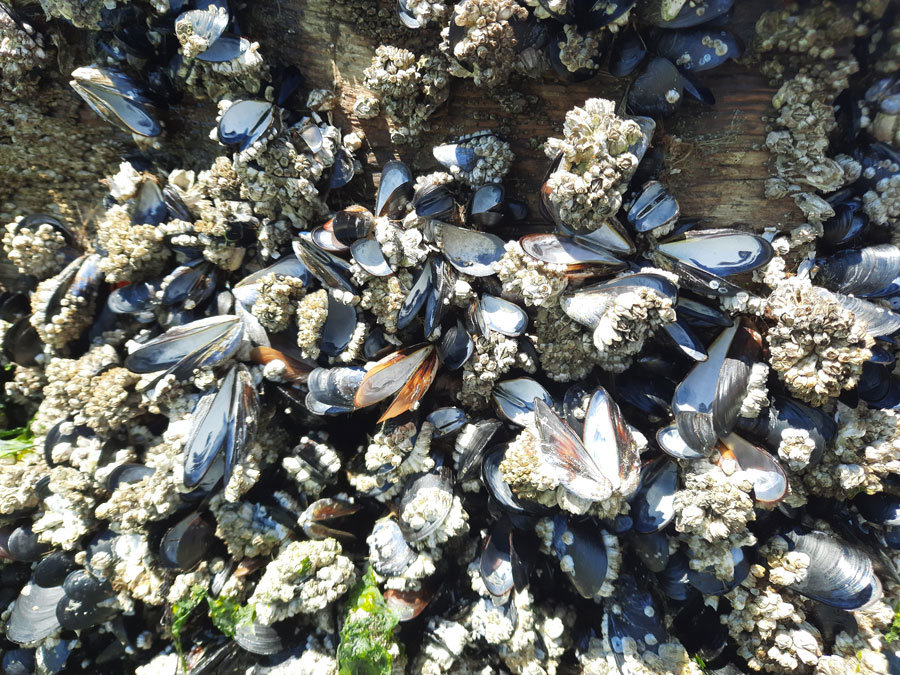
Record high temperatures and minus tides spelled disaster for shellfish and other intertidal sea life in Puget Sound in June.
Teri King, aquaculture and marine water quality specialist with Washington Sea Grant, began getting calls about unusual shellfish behavior up and down the coast beginning as early as June 22. Temperatures then were in the 80s, 15 degrees warmer than average. The lowest tide of the year would be two days later, and the highest temperatures ever recorded for the region would not occur for another five days.
King said that the first shore life to show effects were the varnish clams, sand dollars and cockles. The clams surfaced, seeking cooler temperatures. Oyster, barnacle and mussel deaths followed. “Moon snails actually evicted themselves from their shells,” King said. “Everything was flayed open by the 26th — it was a clambake.”
Key Peninsula residents could smell the results along both Case and Carr inlets. Norm McLoughlin, who reported the massive algae-related clam die-off at Rocky Bay in 2019, said the smell was not as bad as it was then. The mortality rate for that event was estimated to be about 50%, and birds and crabs, the usual scavengers of dead shellfish, would not touch them. That was not the case in the heat-related deaths, according to King.
Kent Kingman, owner of the Minterbrook Oyster Co., said that he lost about 25-30% of his shellfish, but that the death rate depended on location.
“I did some calculations and some of my oysters were exposed to the heat for over 10 hours, including seven hours when the temperature was over 100,” he said. Oysters on rocks and higher on the beach were much more susceptible than those on beaches that were sandy and wet from local surface or groundwater. Nearly all the cockles died, 50% of the varnish clams, 20-30% of the manilas — which are lower down on the beach — and 20% of the oysters overall.
Kingman keeps careful records of his beds and knows now which ones are more resistant to extreme heat. “Those are the ones I will plant first,” he said. The triploids, sterile oysters that were developed in part to avoid the mushy texture of the oyster during the summer spawning season, are usually not as hardy as the diploids. But Kingman said they fared as well as the diploids during the heat. Adults, ready for harvest, suffered a higher mortality rate than the seedlings. But, he said, “it could have been worse.”
The last two years have been difficult for the industry, Kingman said. The pandemic decimated the market, regulations are changing, and climate change has taken a toll. “I feel most for the mom-and-pop growers. They are small family businesses that have been around for 40 years and have found a niche. They are an important part of the industry and may not weather the storm.”
UNDERWRITTEN BY THE FUND FOR NONPROFIT NEWS (NEWSMATCH) AT THE MIAMI FOUNDATION, THE ANGEL GUILD, ADVERTISERS, DONORS AND PEOPLE WHO SUPPORT INDEPENDENT, NONPROFIT LOCAL NEWS